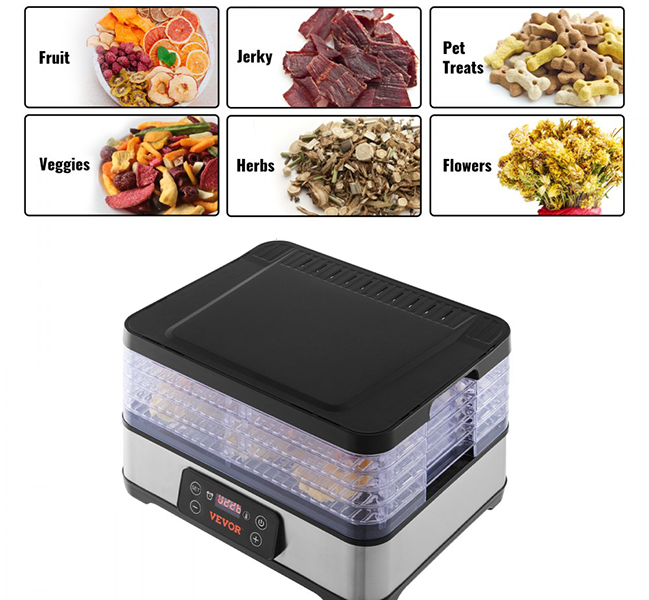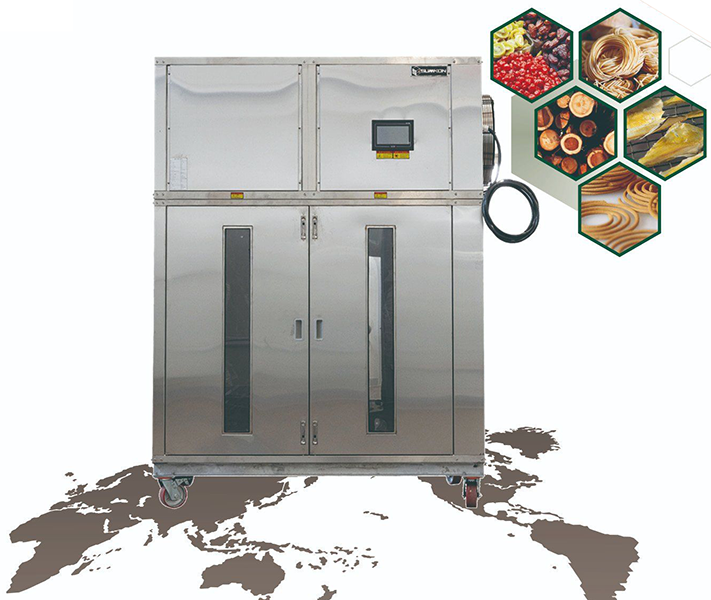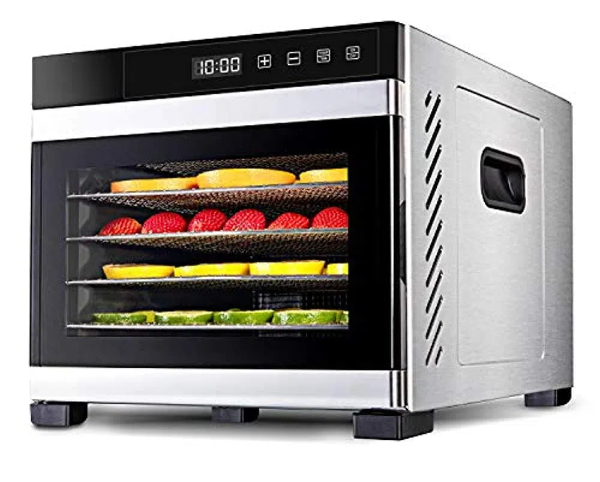
Content Menu
● Introduction
● Understanding Food Drying Machines
>> 1. Heat Pump Dryers
>> 2. Condenser Dryers
>> 3. Vented Dryers
● Key Considerations When Choosing a Food Dryer
>> 1. Energy Efficiency
>> 2. Product Type
>> 3. Space Availability
>> 4. Cost
>> 5. Maintenance Requirements
● Additional Considerations
>> A. Temperature Control
>> B. Humidity Control
>> C. Scale of Operation
● Case Studies: Applications of Each Dryer Type
>> Case Study 1: Fruit Drying with Heat Pump Technology
>> Case Study 2: Vegetable Preservation Using Condenser Dryers
>> Case Study 3: Quick Drying with Vented Systems
● Conclusion
● Frequently Asked Questions
>> 1. What is the main difference between heat pump and condenser dryers?
>> 2. Are vented dryers suitable for commercial use?
>> 3. Which type of dryer is best for preserving nutrients in fruits?
>> 4. How often do I need to clean my dryer?
>> 5. What factors affect the cost of operating a food dryer?
Introduction
In the world of food processing, drying is a crucial step that affects the quality, shelf life, and flavor of food products. As a leading manufacturer of food drying machines in China, we provide OEM services to international brands and wholesalers. This article will explore the various types of food drying machines available in the market, focusing on condenser dryers, heat pump dryers, and vented dryers. We will discuss their features, benefits, and considerations to help you make an informed decision for your food processing needs.

Understanding Food Drying Machines
Food drying machines are designed to remove moisture from food items, preserving them for longer periods. The choice of drying technology can significantly impact the efficiency and quality of the drying process. Here’s a brief overview of the three main types:
1. Heat Pump Dryers
Heat pump dryers utilize a refrigeration cycle to extract moisture from food products. They are known for their energy efficiency and ability to operate at lower temperatures, which helps preserve the nutrients and flavors in food.Advantages:
1. Energy Efficiency: Heat pump dryers consume less energy compared to other types.
2. Nutrient Preservation: Lower drying temperatures help maintain the nutritional value of food.
3. Versatility: Suitable for a wide range of products including fruits, vegetables, and meats.
4. Environmentally Friendly: Reduced energy consumption translates into a lower carbon footprint.
2. Condenser Dryers
Condenser dryers work by drawing in air, heating it, and then circulating it around the food items. The moisture is condensed and collected in a tank or drained away.Advantages:
1. No Ventilation Required: Ideal for locations where venting is not possible.
2. Compact Design: Generally smaller than vented dryers, making them suitable for limited spaces.
3. Consistent Drying: Provides uniform heat distribution.
4. Easy Installation: Since they do not require external venting, installation is straightforward.
3. Vented Dryers
Vented dryers expel hot air and moisture outside through a vent. They are commonly used in residential settings but can also be adapted for commercial use.Advantages:
1. Fast Drying Times: Typically dry food faster due to higher temperatures.
2. Lower Initial Costs: Generally cheaper upfront compared to heat pump and condenser models.
3. Simplicity of Design: Fewer components may lead to easier repairs.
Key Considerations When Choosing a Food Dryer
When selecting a food dryer, several factors should be taken into account:
1. Energy Efficiency
Energy consumption is a critical factor in operating costs. Heat pump dryers are often the most energy-efficient option, followed by condenser dryers. Vented dryers tend to consume more energy due to their operational design.Energy Cost Comparison:
1. Heat pump dryers typically reduce energy costs by up to 50% compared to traditional vented dryers.
2. Condenser dryers offer moderate savings but are still more economical than vented models.
2. Product Type
Different types of food may require specific drying methods. For instance:
1. Fruits and Vegetables: Best suited for heat pump or condenser dryers to retain nutrients.
2. Meats: Can be effectively dried using any type but may benefit from heat pump technology for flavor preservation.
3. Herbs and Spices: Often dried best at lower temperatures to maintain essential oils and flavors.

3. Space Availability
Consider the available space for installation:
1. Heat pump and condenser dryers can fit into tighter spaces without needing external ventilation.
2. Vented dryers require more space due to venting requirements.
4. Cost
Evaluate both initial purchase costs and long-term operational costs:
1. Heat pump dryers may have higher upfront costs but save money on energy bills over time.
2. Vented dryers are typically cheaper to buy but can lead to higher energy expenses.
5. Maintenance Requirements
Different dryer types have varying maintenance needs:
1. Heat pump dryers require regular cleaning of filters but are generally low maintenance.
2. Vented dryers need periodic vent cleaning to prevent lint buildup.
Maintenance Tips:
1. Regularly check and clean the air filters on heat pump models.
2. Ensure that condensate tanks on condenser models are emptied frequently to prevent overflow.
3. Inspect vents on vented models at least once every six months for blockages.
Additional Considerations
A. Temperature Control
Temperature control is vital in food drying processes. Overheating can lead to nutrient loss or spoilage:
1. Heat pump dryers often come with advanced temperature control systems that allow precise adjustments based on the type of food being dried.
2. Condenser models may have simpler controls but still provide adequate temperature management for most applications.
B. Humidity Control
Humidity levels during drying can affect the final product quality:
1. Heat pump technology excels in humidity control by recycling air within the chamber, ensuring consistent drying conditions.
2. Vented systems may struggle with humidity control since they rely on external air exchange.
C. Scale of Operation
The scale at which you operate will influence your choice:
1. For small-scale operations or home use, condenser or vented models might suffice.
2. Larger manufacturers may benefit from investing in heat pump technology for its efficiency over high volumes.
Case Studies: Applications of Each Dryer Type
Case Study 1: Fruit Drying with Heat Pump Technology
A fruit processing company implemented heat pump dryers for their apple slices. The result was a significant reduction in energy costs while maintaining high product quality with vibrant colors and flavors intact.
Case Study 2: Vegetable Preservation Using Condenser Dryers
A vegetable supplier switched from traditional methods to condenser dryers for their carrot chips production. They found that the compact design allowed them to maximize their factory space while achieving consistent drying results.
Case Study 3: Quick Drying with Vented Systems
A small snack manufacturer utilized vented dryers for their potato chips line due to fast processing needs. Although they faced higher energy bills, the quick turnaround time allowed them to meet market demands efficiently.
Conclusion
Choosing the right food dryer is essential for maximizing efficiency and product quality in your food processing operations. While heat pump dryers offer superior energy efficiency and nutrient preservation, condenser and vented dryers have their own unique advantages that may suit specific needs better. Assessing your operational requirements, budget, available space, and specific product types will guide you in making the best choice for your business.

Frequently Asked Questions
1. What is the main difference between heat pump and condenser dryers?
Heat pump dryers use a refrigeration cycle to dry food at lower temperatures, while condenser dryers heat air and circulate it around the food before condensing moisture out.
2. Are vented dryers suitable for commercial use?
Yes, vented dryers can be used commercially but require proper ventilation systems to expel hot air outside.
3. Which type of dryer is best for preserving nutrients in fruits?
Heat pump dryers are best for preserving nutrients because they operate at lower temperatures compared to other dryer types.
4. How often do I need to clean my dryer?
Heat pump dryers should have their filters cleaned regularly (every few uses), while vented dryers need their vents cleaned periodically (every few months).
5. What factors affect the cost of operating a food dryer?
The cost of operating a food dryer depends on its energy efficiency, frequency of use, type of products being dried, and local electricity rates.












